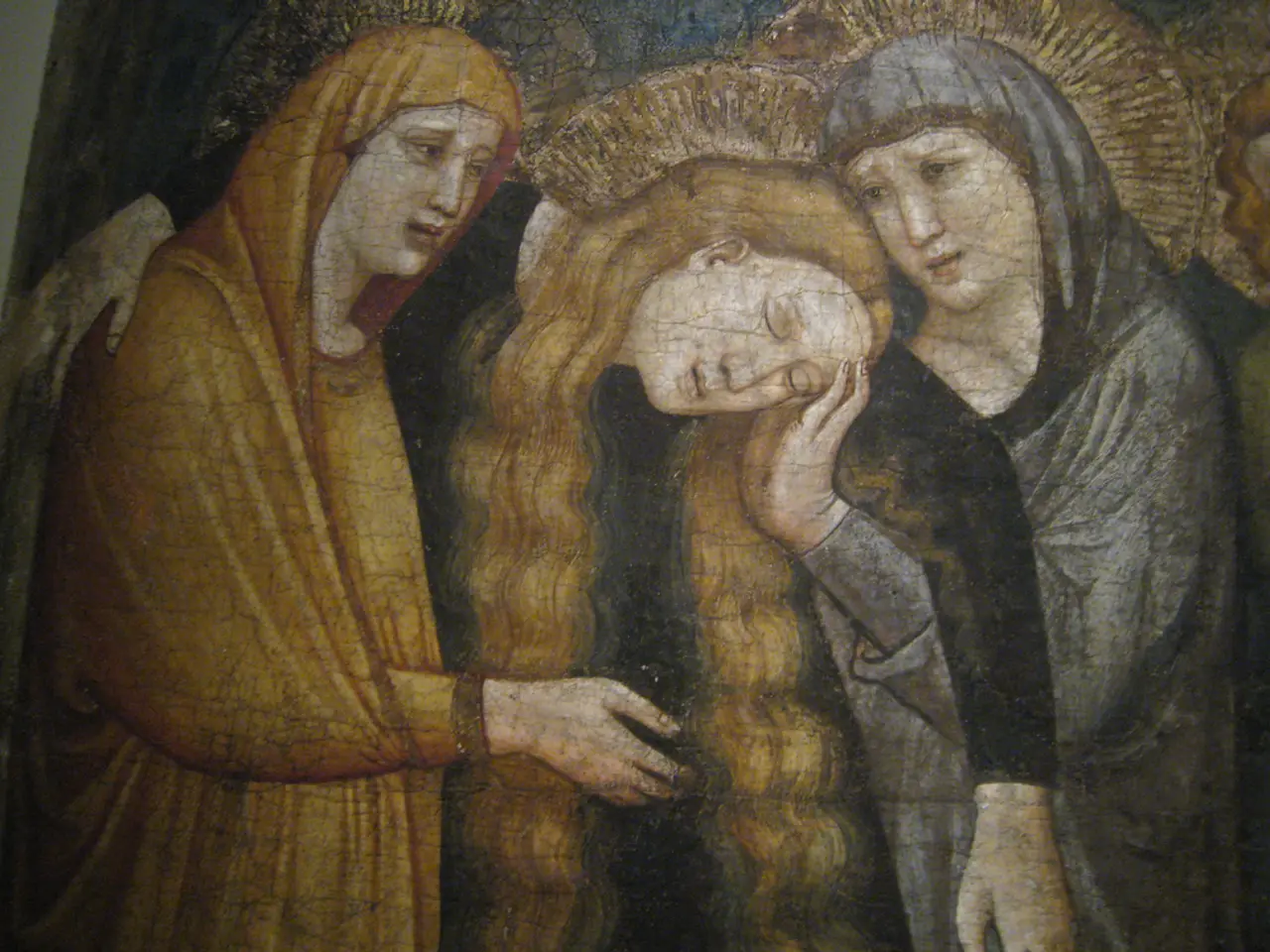Mastering Textured 3D Modeling for Game Design: Key Fundamentals
In the captivating world of game development, 3D textures play a crucial role in creating an immersive experience for players. The art of texturing is a complex and thoughtful process that involves understanding the physical properties of materials and how they interact with light.
Artists use two primary types of materials in game development: basic materials and PBR (Physically-Based Rendering) materials. Basic materials are simpler and often used for objects that don't need to interact dynamically with the game's lighting system, while PBR materials realistically mimic how light interacts with different surfaces, enhancing the game's visual appeal.
The Texturing Process
The best practices for creating realistic 3D textures in game art include several key steps.
- Start with a Clear Concept and High-Quality References: Begin with a strong vision and reference board to identify the materials and surface details you need, such as metal, leather, or plastic.
- UV Mapping: Properly unwrap your 3D model’s surface into a 2D UV map to ensure textures align without stretching or distortion. This step is crucial for applying textures correctly.
- Use Physically Based Rendering (PBR) Texture Maps: Create and layer various texture maps such as diffuse/albedo (base color), normal maps (surface detail), roughness and metalness maps (surface reflectivity and shininess), ambient occlusion (shadows in crevices), and height/bump maps to simulate surface irregularities.
- Build Textures in Layers: Start with simple tileable base textures, then progressively add details like edge wear, scratches, dents, dirt, and grime. Combining hand-painted details and procedural masks enhances realism.
- Leverage Advanced Texturing Tools and Workflows: Use software like Mari or Substance Painter for node-based material setup and texture projection, enabling fine control and layering. Baking essential maps such as curvature and ambient occlusion improves material definition.
- Optimize Textures for Performance: Balance texture resolution and quality to fit GPU memory limits and game engine constraints. Use texture atlases to reduce overhead where appropriate.
- Fine-Tuning and Lighting Adaptation: Adjust parameters like glossiness, color intensity, and bump strength. Test textures under different lighting conditions within the game engine to ensure consistent realism. Shading and lighting should simulate depth via shadows and highlights.
- Use Layered Masks and Custom Maps: Create specific masks for features such as rust or dirt to control their appearance separately in shading and rendering. This allows enhanced look development and more dynamic materials.
- Combine Procedural and Hand-Painted Elements: This hybrid approach allows both controlled randomness and artistic detail, increasing realism and visual interest.
Tools of the Trade
3DS Max is known for its user-friendly interface and is particularly well-suited for creating textures for architectural visualizations and game environments. Blender, a versatile and free open-source software tool, is also widely favored for its comprehensive set of texturing tools. For high-end texturing and complex projects, Maya offers advanced features for creating realistic textures.
The Importance of Textures
Texture diversity is important in game art, as each texture plays a role in setting the scene. The properties of materials in a game are closely tied to the textures used, influencing how players perceive and interact with the game world. Fine-tuning involves making adjustments and fine-tuning the textures to ensure they interact correctly with the game's environmental lighting and conditions.
Learning how to create textures is a journey filled with opportunities for innovation and artistic expression, transforming simple models into vibrant and engaging game elements. The guide "How to Draw Materials: Textures, Reflections and Transparency" provides more information about the properties of materials in a game. With these best practices and techniques, you're well on your way to creating stunning 3D textures for your next game project.
- A career in game development might lead you to explore various aspects such as lifestyle, with the passion for fashion-and-beauty, personal-growth, and education-and-self-development.
- As someone invested in this field, honing your skills in shopping for the latest gadgets can prove beneficial, as technology plays a significant role in game development.
- Moreover, understanding data-and-cloud-computing and artificial-intelligence can help you stay ahead in this rapidly evolving industry.
- In your down time, you may find solace in the comforting aspects of home-and-garden or pet-related activities, providing a refreshing break from the virtual world.
- With travel offering new perspectives and experiences, it can contribute to your creativity and inspire unique ideas for your games.
- If sports are your passion, immersing yourself in soccer, football, or even American football could provide an additional source of inspiration, as sports-analysis often involves principles similar to game development.
- For personal growth, focusing on relationship-building can enhance your interactions with other developers and collaborators, further elevating your career-development.
- Evenings can be spent unwinding with a good meal and drink from the food-and-drink category, helping you find relief from the challenges faced during the day.
- Speaking of-food-and-drink, emerging trends in dining and culinary arts can be integrated into the gaming world, adding a touch of realism to your creations.
- In addition, cars have become prevalent in modern games, offering exciting opportunities for developers to create dynamic driving experiences and breathtaking visuals.
- Ultimately, the process of creating realistic 3D textures in game art is a continuous journey of learning, requiring patience, practice, and a determination to push the boundaries of your own creativity.




